Essential Kit for Hiking in Mountain Terrain.
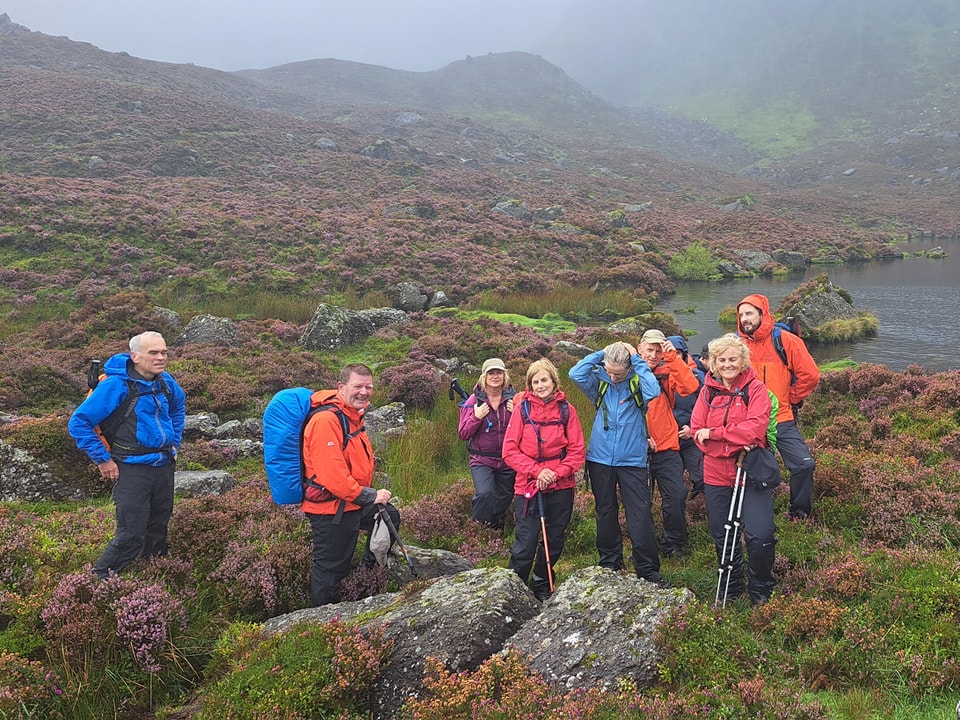
Here is my take on what we should be carrying in our pack when we take to the mountains this spring.
- Rucksack
A pack of 30 – 35 litres capacity is best, and would be sufficient for carrying what you would need for the day.
- Rucksack liner or cover
My preference is always for a liner, a waterproof bag that sits in the main compartment of your pack and helps to keep the contents dry in wet weather. Rucksack covers have a tendency to come off in high winds and can be awkward to manage.
- Waterproof drybags
Put those items that you want to make sure stay dry, such as gloves, spare warm layer and first aid kit, into drybags for extra protection from the weather.
- Waterproof Jacket & Pants
Invest in a good waterproof jacket and waterproof pants. These are essential items to ward off both rain and cold winds. Inadequate protection from either can make you uncomfortable at best, and at worst can lead to hypothermia, as the chilling effects of wet clothes and high winds are greatly increased.
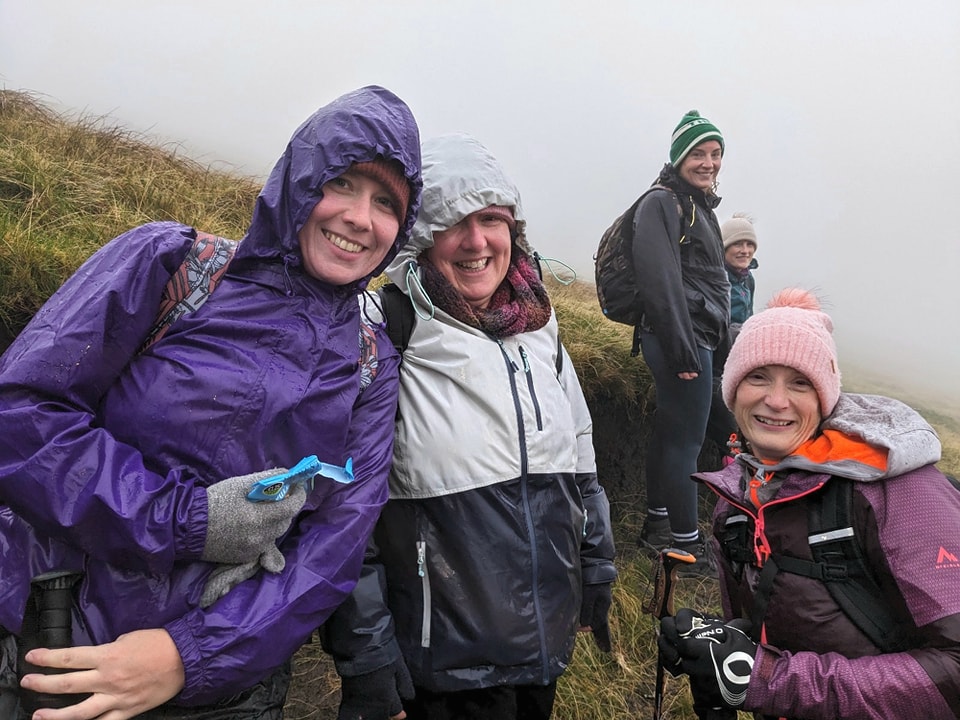
Good waterproof clothing will keep you comfortable all day
Choose one with a breathable membrane to reduce moisture building up inside, and ensure it has either waterproof zips or storm flaps to cover the zip, this will prevent water ingress through the front. Make sure it has a good hood too, with plenty of volume, and that this is adjustable.
- Gloves
Take several pairs. I am often finding lost gloves and hats in the hills, so take spares to use in case you lose one. It’s also great to change into dry gloves half way through a wet day. Fleece type gloves are ideal for most conditions, but be prepared to upgrade to insulated and waterproof gloves in the colder months.
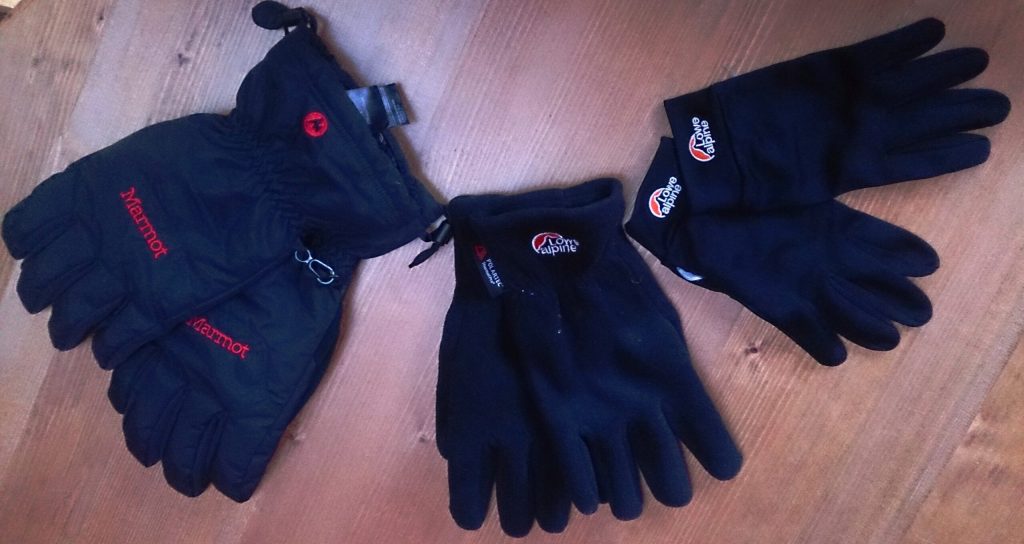
It’s important to have several pairs of gloves in colder weather.
Warm hat
Brightly coloured beanies are the order of the day here (and maybe a spare)..!
- Warm spare layer
You may have an enforced stop in the mountains, maybe a colleague has an injury, or perhaps you are stopping for lunch in an exposed spot. In this scenario a spare warm layer is ideal. A synthetic insulated jacket is best, it can be put over your existing clothing, including wet waterproofs, and will warm you up straight away. A fleece jacket could be an alternative, but they are not windproof, so you would need to put it on under your windproof layer.
- Food and Drink
Always ensure you have plenty of high calorie food available, and bring extra in case you are delayed and have to spend more time outdoors, a 75kg person with a day pack can burn around 450-500 calories an hour when hiking.
There is no rule concerning how much liquid you should take, though 1.5 litres is a good guide. Take more in hot weather, and take a hot drink in a flask when it is going to be cold.
My favourite is a hot fruit tea with honey.
- First Aid Kit
A bare minimum would be an ‘ouch-pouch’, this could consist of sticking plaster, antiseptic wipes and blister plasters, such as Compeed. You may feel you want a more comprehensive kit, but do get training in this case, and do not carry what you are not competent to use. REC (Rescue and Emergency Care) courses are very suitable and widely available. If you are part of a group then a larger, ‘group first aid kit’ should be carried between you.
- Survival (Bivvy) bag
This is rather like a plastic sleeping bag, bright orange, lightweight and cheap, and everyone should carry one in their pack. In emergency situations you can climb into this bag and it will protect you from the worst of the weather.
They have often been attributed with saving lives in the mountains.
- A group shelter
Also known as an emergency or survival shelter, this is a plastic tent-like cover that a group of people can get into to give protection from the elements. They come in various sizes from 2 to 10 person, and would be used to protect a casualty or as a shelter on an exposed lunch stop. If you are hiking as part of a group then a larger one could be carried between you.
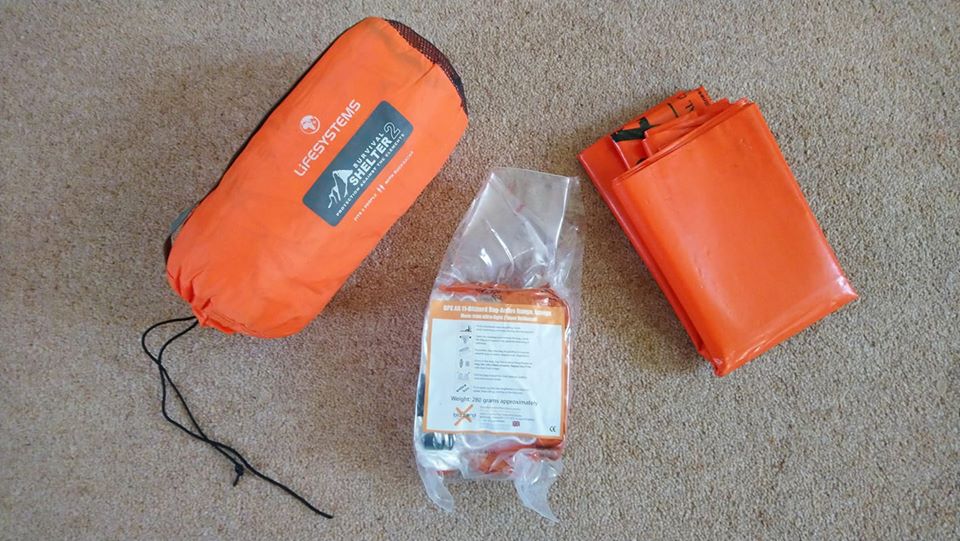
Group shelter, Bivvy bag and ‘Blizzard’ bag
- Head Torch
Essential in winter, and a good idea all year round, a head torch will provide you with light to get off the mountain should you be caught out in the dark, it can also be used for signaling for help. It’s a good idea to carry extra batteries, or a spare torch as well.
- Map and compass
Essential items for all hillwalkers, do not rely on smartphone apps as they can get wet and cold and then fail. Carrying a map and compass is not enough on its’ own, you need to be confident and competent in their use. If you are not sure how to navigate yourself around the mountains with a map and compass then go on a course to learn how to master these essential skills.
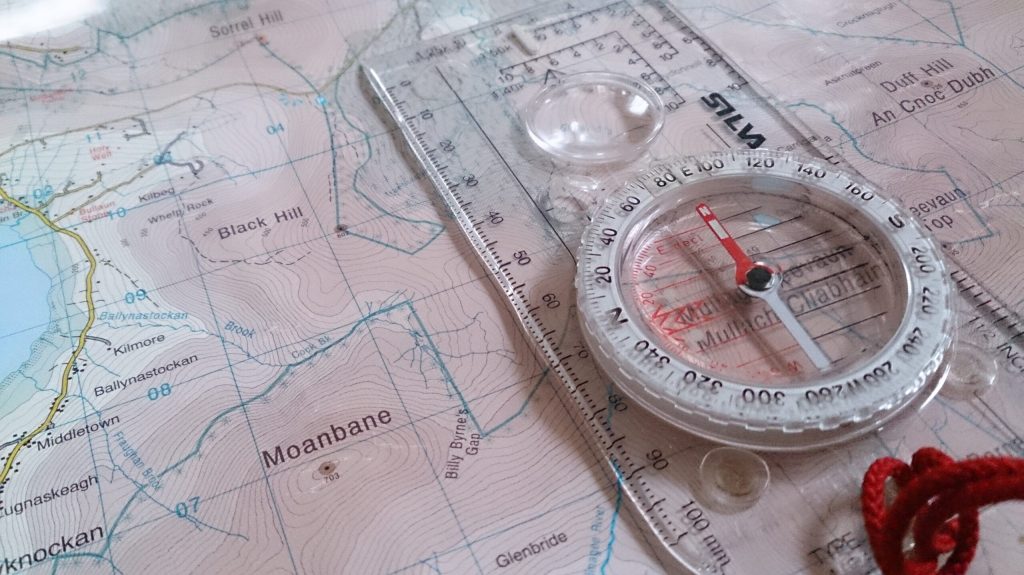
- Emergency whistle
Many rucksacks now come with an integral whistle in the chest strap. Six one second blasts on the whistle, repeated after a short break, is the internationally recognised emergency signal. The reply from the rescuers is three blasts. It makes sense to carry one.
- Duct tape
This amazing versatile tape has a myriad of uses, from repairing torn waterproofs to temporary boot repairs, it can also be used in a first aid context with proper training. Wrap some round your water bottle or walking pole).
